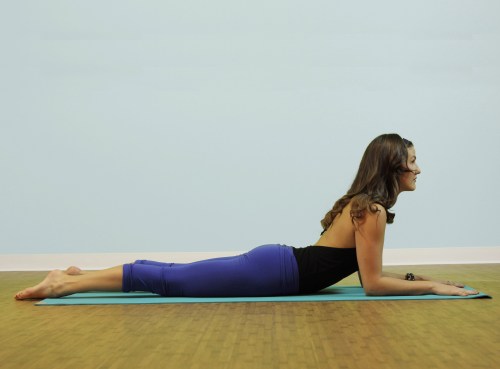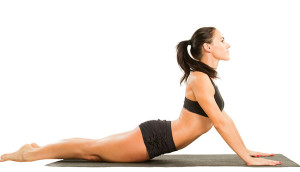
Yin yoga, or fascia yoga, is a style of yoga focused on the fibrous connective tissue of the joints. Two of the most popular poses in yin yoga are the sphinx pose and the seal pose. Both of these can provide wonderful therapeutic exercise for the lower back!
Getting into the pose
Sphinx pose and seal pose are essentially two variations of the same pose. In essence, sphinx pose is a good one to start with, especially if you’re new to yin yoga. Seal pose is a little more challenging, and a good goal to work your way up to whenever you’re ready.
Let’s discuss getting into sphinx pose first. First, lie belly-down on your mat, legs stretched out behind you.
Now, use your forearms and hands to push yourself up off the ground. If your lower back will permit it, you can pull your elbows in right below the shoulders.
If your lower back protests, don’t push it! You can push your hands forward a little and lower yourself back down.
The key difference with seal pose is that seal pose is a little more challenging. If you master sphinx pose and you are up for the challenge, you might want to give it a try.

Getting into seal pose is very similar. To begin, place your palms flat on the ground, in front of you. Your palms should be in line with your elbows. Now, apply a firm pressure and push yourself up, straightening your arms as you go.
A key thing to note about seal pose is that your hands will be quite some distance from your body. You should experience only minimal exertion in keeping your back bent. Your arms should only be supporting your upper body, not the rest of you.
In both cases you will want to hold the pose for some minutes to get the most out of the exercise. Of course, if you start to feel pained you should stop.
Benefits
Both the sphinx and the seal pose do very wonderful things to your sacral-lumbar arch. What you’re doing when you perform either of these poses is compressing and then stimulating your sacral-lumbar arch, something that will help you develop a more toned spine.
In fact, people who have trouble with bulging discs or herniated discs have sometimes found these poses very therapeutic.
You can even stimulate your thyroid if your neck is dropped back. And in the seal pose, the stomach can also be stretched.
What to watch out for
First and most importantly, if you feel sharp pains while doing either of these poses, end the exercise. It’s very important to avoid injuring your spine or your back. In some cases people who feel such pains doing the seal pose may find the pain dissipates if they go back to sphinx.
You should also avoid these poses if you have a headache. Expecting mothers should always avoid pressing their bellies into the floor; using bolsters for the pelvis and forearms may be a safe alternative.



